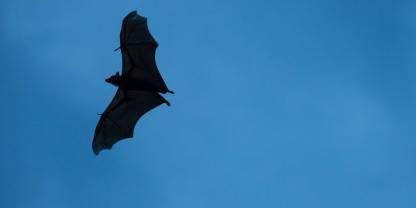Average Expert Rating
Rating Breakdown
Write a User ReviewThe world’s biggest mammal migration
The migration of up to 12 million straw-colored fruit bats to a small patch of forest in Kasanka is a seasonal affair dictated by local rainfall patterns. The first wave of arrivals usually takes place in early October, with numbers peaking over November, before the bats dissipate elsewhere towards the end of December.
We timed our visit for late October, by which time it was estimated that around 5 million bats were already in the park. We visited three of the different aerial-viewing platforms that have been erected close to the bat forest, and were privileged to watch countless thousands of these hefty flying mammals (wingspan 75cm) stream out of the canopy at dusk, then return again at dawn. It’s a truly mesmerizing and mind-boggling
Read more
experience, one punctuated by occasional bouts of raptorial action as various eagles swoop down to catch a bat in flight.Kasanka is the only place in southern Africa where you can be almost certain of seeing the sitatunga, a semi-aquatic antelope associated with swamp interiors. From a strategically located viewing platform overlooking a swampy stretch of the Kasanka River, we saw at least a dozen sitatungas, including a couple of males, which resemble a larger, shaggier and longer-horned version of the widespread bushbuck.
When it comes to more conventional game viewing, Kasanka supports small populations of leopard, elephant, buffalo and sable antelope, but none of them are easily seen. By contrast, it's an exceptional bird-watching destination. Highlights included my only ever glimpse of the striking Anchieta’s tchagra in the swamp bordering the Kasanka River, as well as lesser jacana on the lake in front of the main lodge, and miombo woodland specials such as Arnot’s chat, pale-billed hornbill and racket-tailed roller.
Overall, Kasanka is a rather specialized park, one that's most likely to appeal to repeat safari-goers and bird-watchers looking for something different, except over mid-October to mid-December, when the phenomenal bat migration is present.
Wilderness Without the Crowds
Kasanka is famous for its swampland, and in particular for the situtanga, a shy, semi-aquatic antelope. Gliding down the forest-shrouded Luwombwa River in a canoe, you’ll see crocodile, hippo, otters and rare blue monkeys. If you’re lucky, you may spot one of the small number of elephant.
Birders love it here. There are more than 400 species, including a diverse and visible range of water birds, and in November and December five million fruit bats visit the area, blanketing the skies. It’s the largest such gathering anywhere in the world.
When I last went to Kasanka we were the only visitors in
Read more
the park and had the rustic Pontoon campsite, overlooking hippo and crocodile filled lake, completely to ourselves. A highlight was getting up early in the morning to visit Fibwe Hide. A 20 metre climb up a ladder took me to a wooden platform at the top of an old mahogany tree from where I watched the endless swamps spread out below me come slowly to life with the dawn.Off the beaten track park famous for sitatunga and the astonishing bat migration
Read more
us up a rickety step ladder to a hide in the tree canopy, from where it was a marvellous sight watching these chirping creatures sweeping from the branches and across the vast orange sky at sunset.Home of the world’s biggest mammal migration
The birdlife is more impressive, with more than 400 species found in the park. And it’s a pretty and tranquil park too, punctuated by swamplands, lagoons, rivers and dense forests. There are just 2 lodges in the park, and 3 basic but picturesque campsites, so you certainly won’t see a lot of traffic about the place.
But Kasanka’s primary draw card is the astonishing annual fruit bat migration that occurs roughly between late October and December. Somewhere between 5 and 10 million bats visit occupy a tiny 10 hectare area of the park and at sunrise and
Read more
sunset you can watch them covering the skyline from one of the park’s tree hides. This is a truly strange and wonderful experience.I visited the park in peak bat season and even then we shared the tree hide with just one other couple and had the campsite entirely to ourselves.
Bats and Birds
This small national park is privately managed by The Kasanka Trust with profits going to the local community. It comprises a mosaic of forests, lakes, rivers and swamps, and has a very rich birdlife, including a number of Zambian ‘specials’.
Kasanka has achieved worldwide fame because of the extraordinary spectacle that happens in November and December, when up to 12 million straw-coloured fruit bats arrive to roost here. This is the world’s largest mammalian migration. At dusk, these large fruit bats pour out of a tiny patch of forest, swirling upwards and outwards as they head off to feed … before returning again at dawn. Visitors observe this incredible spectacle from scaffolding platforms. Kasanka is also probably the best place in the world to see the very shy swamp-loving sitatunga antelope – again observable from a special platform.
You can camp or stay at the simple and rustic Wasa Lodge.

